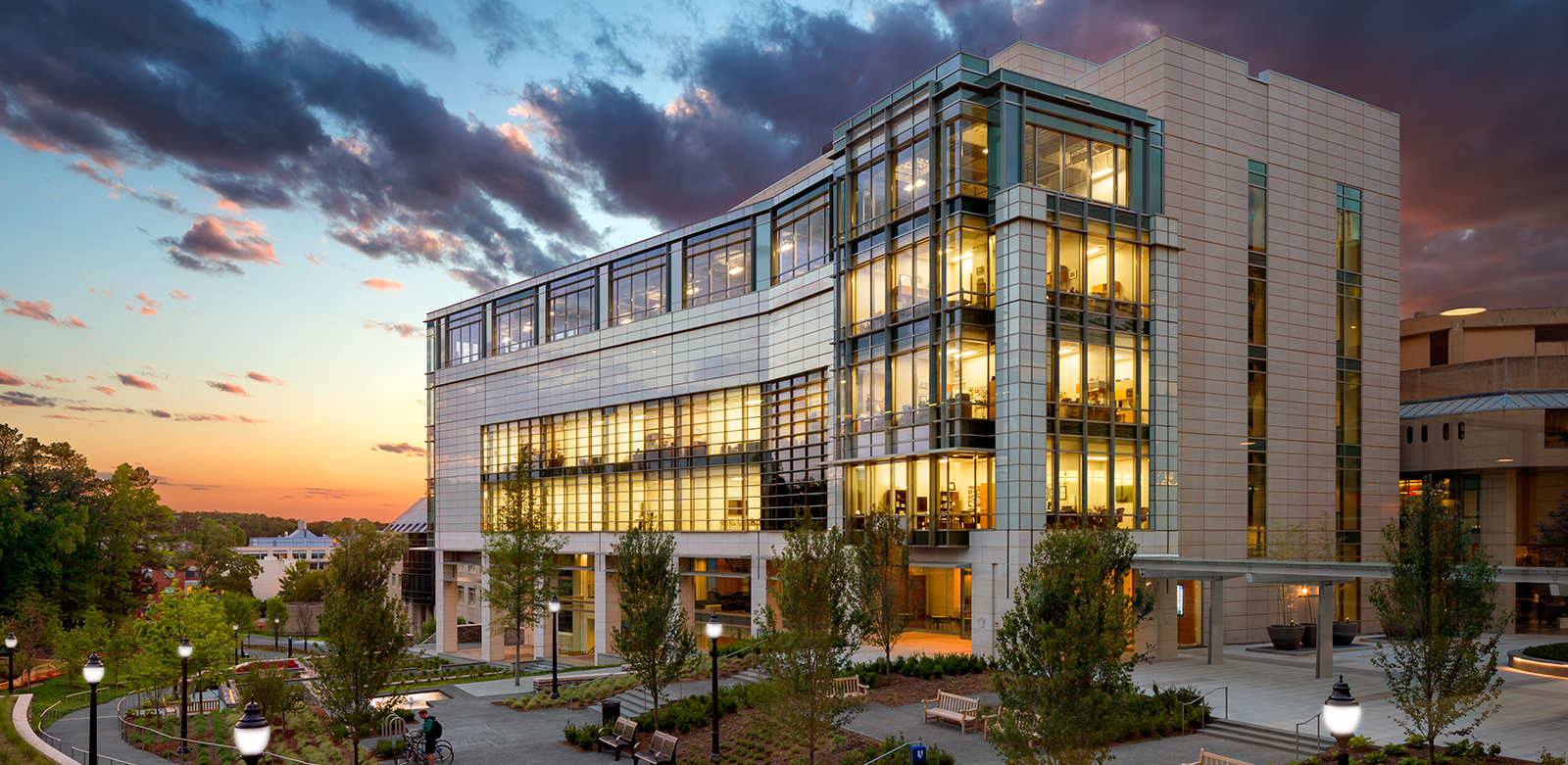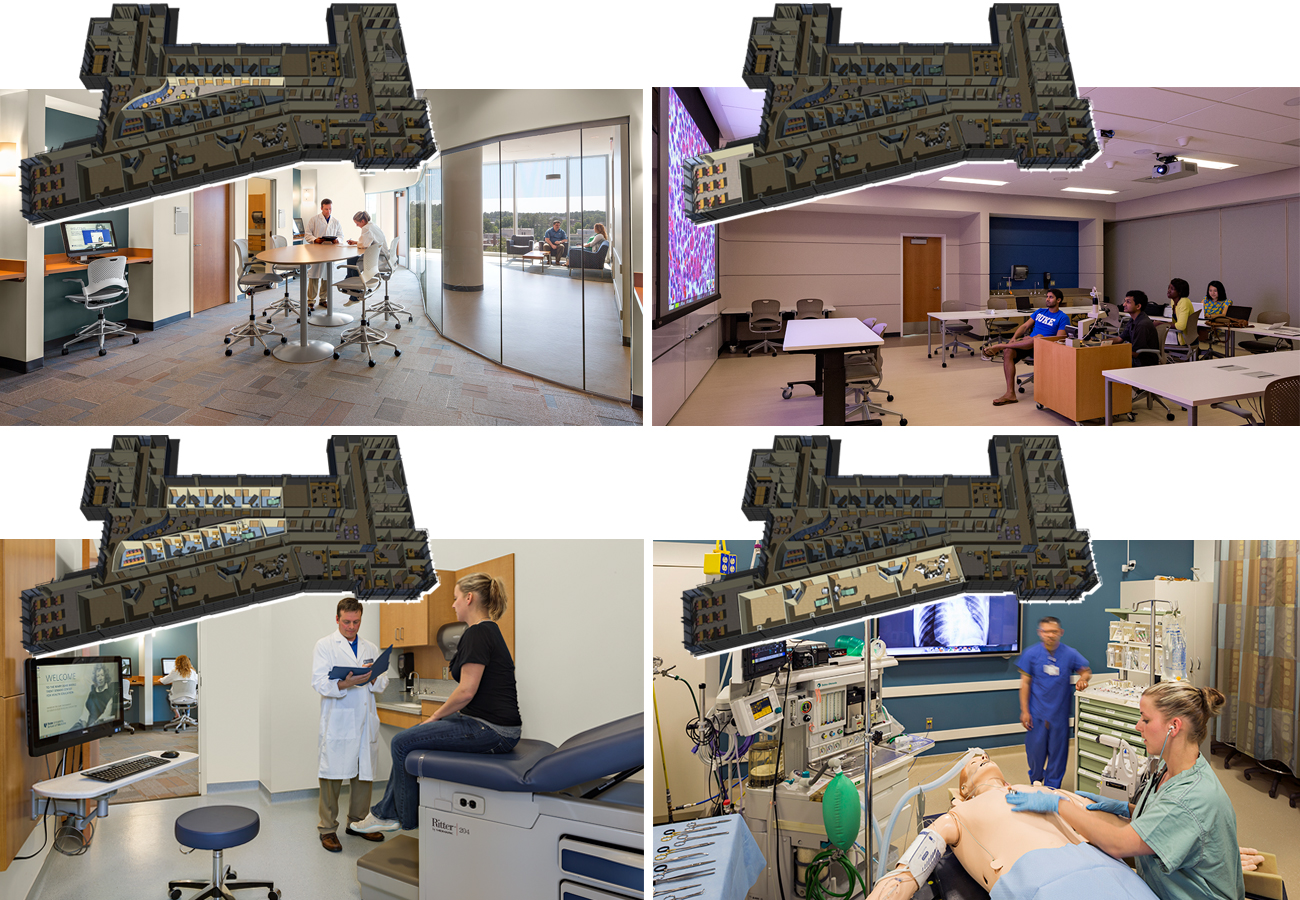
Recognizing the need for a centrally located education building to serve as the hub of its medical school, Duke hired SLAM and associate architect Duda|Paine to design a new 115,000 SF Learning Center for the University’s School of Medicine. The Center creates a home and focal point for the School’s teaching, administrative and social activities, providing instructional space and simulation facilities that address innovative care delivery methods and training.
![[logo]](https://slamcoll.com/wp-content/themes/sub151-SLAM/resources/images/logo-only.png) at-a-glance
at-a-glanceThe intent was to create an appropriately forward-looking yet contextual facility that creates an enhanced visual identity for the School and the medical education program. Community, connectivity and collaboration were key design issues, with an emphasis on providing a warm and welcoming home for medical students.

The building is strategically located at the heart of Duke’s Medical Campus, positioned next to and connected directly with the Seeley Mudd Library. It fronts onto the East/West Greenway Esplanade and connects with the North/South Concourse. This crossing is a vitally important intersection tying the North Hospital with the clinics to the South, and providing an East/West pedestrian way from Erwin Road to Research Drive.

The formerly scattered functions of the School of Medicine’s were united into a single building. The scope included design for a new team-based teaching and learning model, but also involved a ‘hidden’ curriculum: facilitating interaction among students and between students and faculty. For Duke, these connections are the heart of the medical education experience.

SLAM worked with Duke University on layouts, provided utilization analysis, and helped them understand the staffing efficiencies and cost benefits of their new team-based learning pedagogy. Scalable classrooms allowed the faculty to initially teach in their traditional format, and over time transition to a larger team-based configuration. The TBL Lecture Hall integrates breakout space within the room at each tier, enabling students to quickly move from lecture to small group mode, yet benefit from the dynamics of multiple groups working together.

A 10,000-SF simulation center integrates clinical skills/assessment and human patient simulation into a flexible inter-professional learning environment The facility is designed to provide advanced and innovative training for physicians, residents, fellows, physician assistants, nurses, medical students, health care providers, and industry professionals. It also supports a robust standardized patient training program that serves a number of healthcare institutions in the region. In addition, the simulation center is used to conduct funded research on patient safety and team communication. The simulation program includes two large simulated OR rooms with a shared control room and a flexible ICU room. The pre-existing Surgical Education and Activities Lab (SEAL) was also incorporated into the new center and accommodates a range of task trainers. Reception, debriefing and storage rooms are shared between simulation and skills.

Finally, we have a building that, through its prominent location, stunning architecture, and visual connection to Duke University, reflects our commitment to and reverence for our mission of educating future leaders in medicine and science. It is indeed a great day for Duke Medicine.


